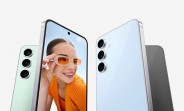It was a week full of announcements: Xiaomi had a few big launch events and Samsung also unveiled a trio of interesting devices.
In China, the Redmi Note 14 series debuted with three models: vanilla, Pro and a Pro+. The Pros are extra cool and have high-quality curved displays. The Pro+ model stands out with better camera hardware and a 6,200 mAh silicon-carbon anode battery. The Xiaomi Redmi Note 14 Pro+ starts at CNY 1,900 for the 12/256GB model, while the Redmi Note 14 Pro costs CNY 1,400.
Meanwhile, in Berlin we saw the Xiaomi 14T and 14T Pro go official with 5,000 mAh batteries and 6.67-inch 144Hz displays. However, the Pro has a better main camera and a larger zoom lens, along with a more powerful Dimensity 9300+ chipset, faster wired charging and wireless charging. Both are available from this week from €650 and €900 respectively.
Samsung announced the Galaxy S24 FE with an Exynos 2400e and a 6.7-inch 120Hz screen. There’s a triple rear camera – ultra-wide angle, wide angle and 3x zoom – and a 4,700 mAh battery with 25W charging. The Galaxy S24 FE will be released on October 3 and will cost $650.
The Pro+ model stands out with a Light Hunter 800 main camera and a large 6,200 mAh silicon-carbon battery. Both have curved OLED screens with 12-bit color and Gorilla Glass Victus 2 protection.
The new chipset also brings the ProVisual camera engine from the flagship S series. The new FE model will receive 7 years of support.
We’ve seen the Snapdragon 8 Gen 4 twice this week, first in the Galaxy S25 Ultra with a huge CPU clock speed of 4.19 GHz (although we’ve also seen them at 4.32 GHz), achieving huge results. The other sighting revealed a GPU clock speed of 1.15 GHz – a 56% improvement over the current Snapdragon 8 Gen 3.
The new Adreno 830 may run at even higher clock speeds, 1.25 GHz, but this information comes from an early reference device.
Finally, the iPhone 16 Pro’s touchscreen issues could be software-related as part of iOS 18.1. The palm rejection algorithm is believed to be the cause of this, as the problem is more common around the edges of the screen, especially around the camera control button.







